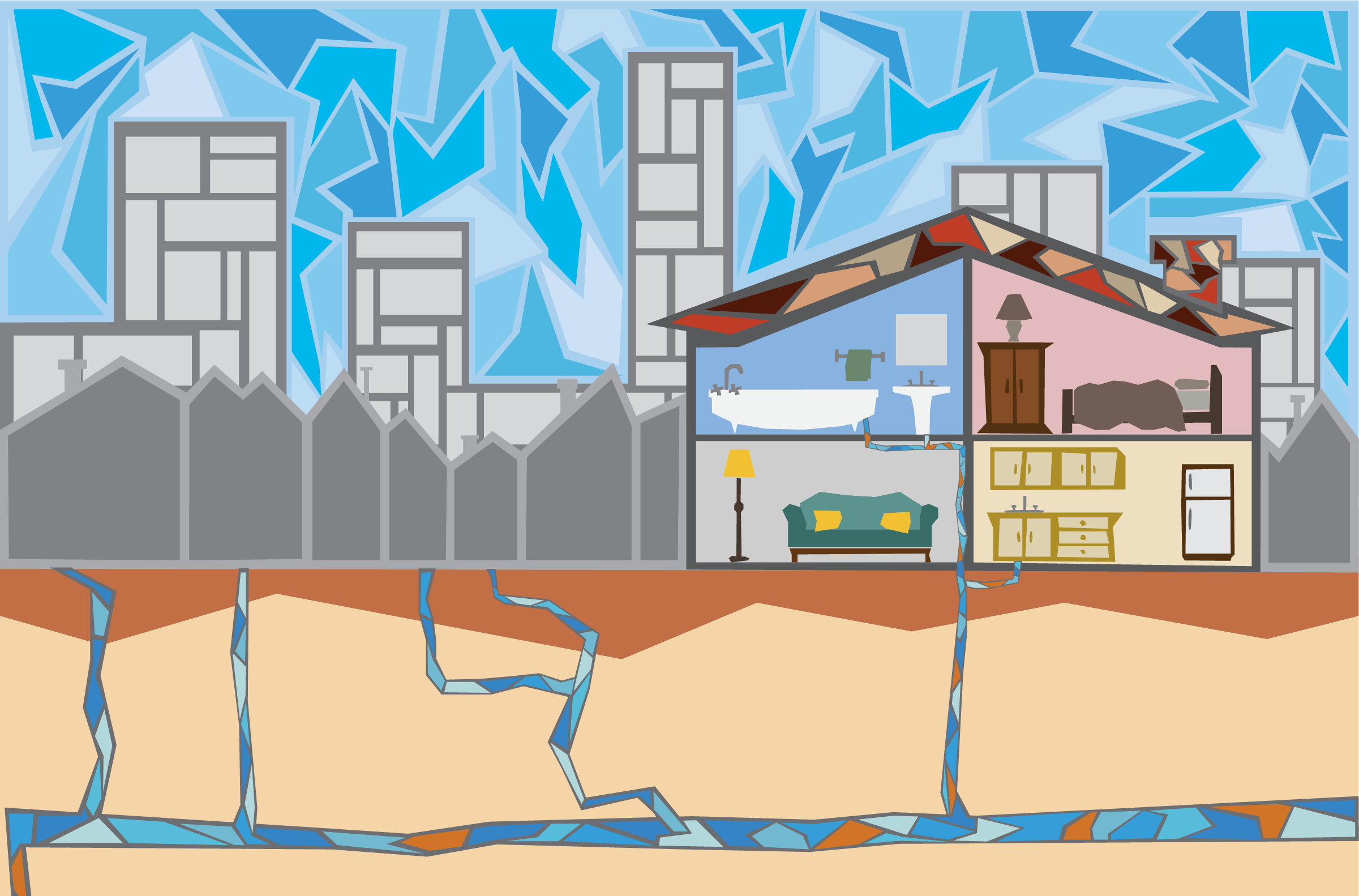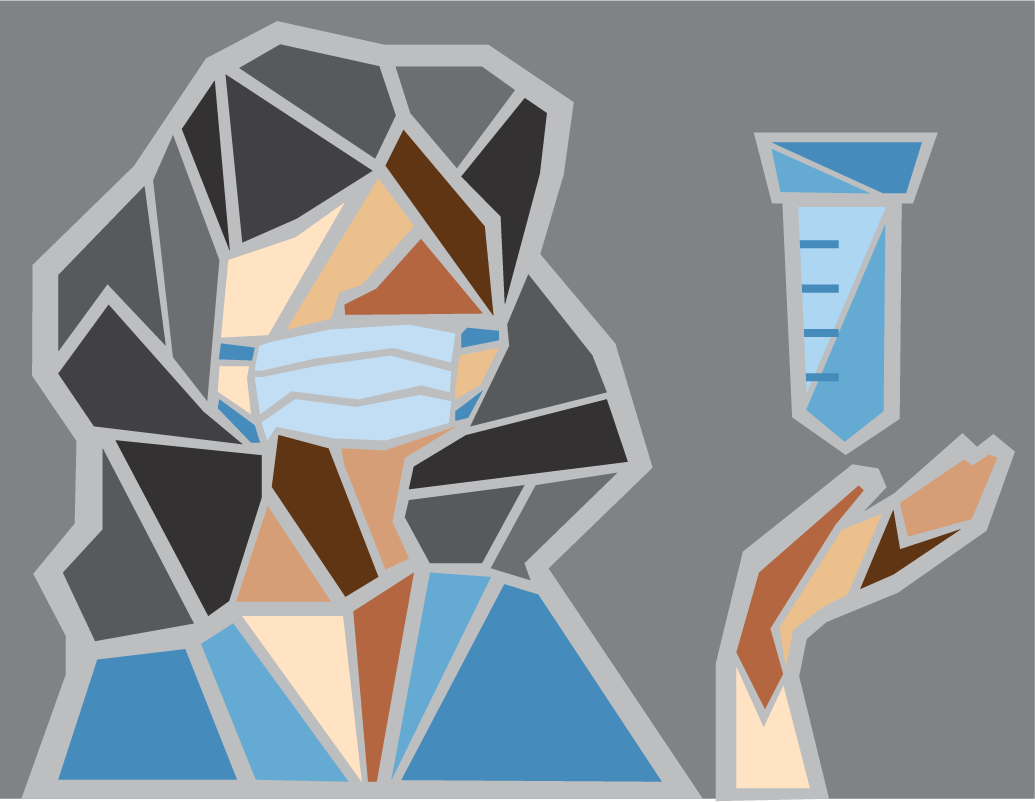
On January 19th, 2020, an 80-year-old man in Hong Kong boarded the Diamond Princess cruise ship with a slight cough. Within a few days, he broke out in a fever and tested positive for COVID-19. The cruise ship caught the world’s attention as the disease spread rapidly through the passengers and crew. While the rest of the world was stockpiling hand sanitizer and toilet paper, the East Bay Municipal Utility District (EBMUD) was preoccupied with safely treating the wastewater from the cruise ship. EBMUD reached out to Kara Nelson, a professor of Civil and Environmental Engineering at UC Berkeley. Could there still be infectious viruses in the water? What regulations would keep sewage workers safe from COVID-19? And could we learn anything about the virus from clues in the wastewater?
Members of the Nelson lab started driving to EBMUD on a daily basis to pick up tubes of wastewater. With no existing handbook for isolating the novel virus, the team had to figure it out in real time. They first tried filters that sorted the wastewater contents by size: human and bacterial cells (small), viruses (smaller), and other molecules floating around (smallest). But Oscar Whitney, a doctoral student in the Molecular and Cell Biology program, was concerned that the SARS-CoV-2 viruses in the wastewater may have already fragmented into pieces that would be too small for the virus-sized filters to catch. He suggested extracting all of the RNA in the sewage–whether or not it came from intact cells–and then picking out the sequences that belonged to SARS-CoV-2. Whitney’s idea proved to be much more efficient at detecting SARS-CoV-2 than the filters, so it quickly became part of the lab’s daily process.
The complications didn’t stop there. Many of the reagents they needed were in short supply or reserved for clinics, so the team figured out how to make their own. The lab was already used to taking some of the precautions recommended by the Center for Disease Control (CDC) for coronavirus research, like wearing gloves and lab coats and working in a sterile chamber. But the CDC was uncertain about whether wastewater viruses could travel through the air of the lab. After any steps that involved spinning or agitating the tubes of wastewater, the researchers were advised to pause and wait for the liquid to settle before opening the tubes. In an abundance of caution, they decided on two other precautions as well: a pre-added liquid in the sample collection tubes that immediately reacts with the wastewater to neutralize viruses, and a heat blast to kill any lingering, stubborn viral particles.

Throughout the summer of 2020, the group began to work out the kinks and settle into a daily schedule. They started sampling from other sites throughout the Bay Area, including San Francisco and Marin County. Now, they receive a package with a new set of wastewater samples every morning. Every evening, they upload the data onto a dashboard for public health agencies to view. Tracking SARS-CoV-2 prevalence in the wastewater is not meant to replace clinical testing, which remains the only way to isolate positive cases and notify their recent contacts. However, clinical testing is not always accessible. At the beginning of the pandemic, case numbers were unreliable because testing supplies were scarce. As vaccines became available and workplaces relaxed testing requirements, testing slowed again. Additionally, communities that are especially vulnerable to outbreaks often have the least access to clinics or research labs. Wastewater, on the other hand, can be continuously sampled at the same rate and is already normalized to the population it comes from. As Rose Kantor, an assistant research engineer on the team, puts it, “Wastewater doesn’t lie.”
Besides reporting SARS-CoV-2 prevalence, the researchers are also tracking genetic changes in the virus over time. This work comes with significant challenges. Not all viral genes are easily detected, and the gene for the spike protein, which is most prone to dangerous new mutations and consequently most important to monitor, is one of the more difficult ones to track. Additionally, since a single batch of wastewater represents the combined waste of hundreds of people, mutations detected in the same sample may have originated from two different strains of the virus. Despite these difficulties, the group has successfully assembled entire viral genomes, even detecting some new variants before they started showing up in the clinic.
The state of California is currently setting up a wastewater monitoring lab, and once that lab is ready to take over, the team at UC Berkeley will go back to other projects that they put on hold when the pandemic hit. But many of the lab members feel that their career trajectories have been permanently altered by the detour. Hannah Greenwald, a doctoral student in the Civil and Environmental Engineering program, pivoted to focus the remainder of her dissertation research on COVID-19. Her ongoing thesis chapters explore the effects of shelter-in-place mandates on drinking water quality. Many buildings went unoccupied for months during the pandemic, allowing metal residues to accumulate in the stagnant water. She credits the wastewater sampling project for giving her the skills and confidence to bridge the gap between environmental engineering and public health.
Greenwald also reflects on the rapid pace and collaborative structure of the project. “Environmental engineering will set up these simulated systems, and they’ll run for a couple of years … By the time all the processing is done and the papers are out, it’s more like five years, and then the actual legislation can take over a decade from when the research was conducted. This work required us to be constantly on top of the literature. New findings were coming out every day.” To keep up with the rapidly changing landscape, the group connected with a network of wastewater sampling labs around the world to share protocols and discuss results on Slack. Lauren Kennedy, a recent graduate from the Civil and Environmental Engineering graduate program, comments that team-based research can be rare in academia, and she plans to seek out similarly collaborative environments in the future: “It became a value for me after this experience.”
The field of environmental engineering has been transformed as well. Typically, wastewater research focuses on treatment and sanitation. The COVID-19 pandemic expanded a small subfield of research with a different goal: using wastewater to actively monitor infectious diseases in the population that it comes from. UC Berkeley’s pop-up lab and others like it have made the connection between environmental engineering and public health more explicit than ever before. While the lab is only a temporary addition to the campus, it is clear that wastewater-based epidemiology is here to stay.
-------
Reena Debray is a graduate student in integrative biology.
Designs by Natalie Goh
This article is part of the Fall 2021 issue.





